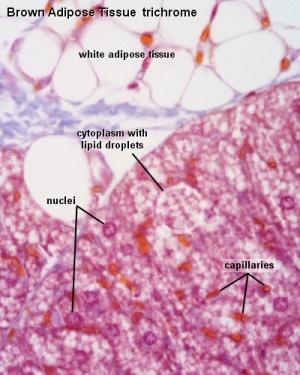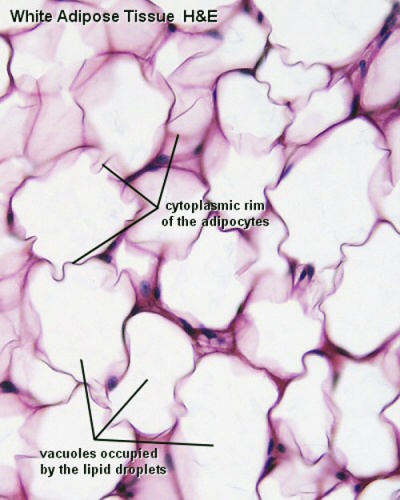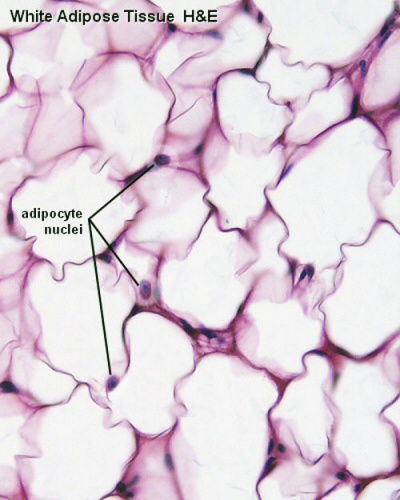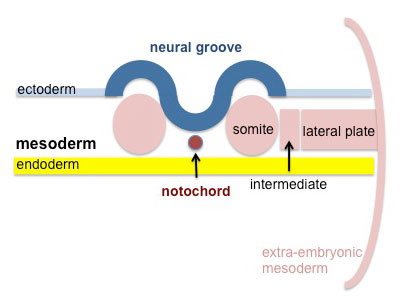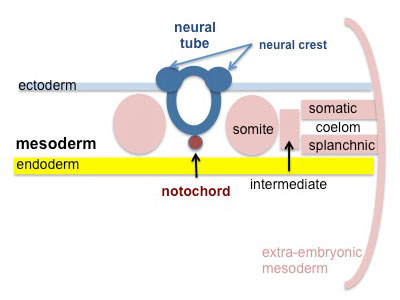Adipose Tissue Development
| Embryology - 18 Apr 2024 |
|---|
| Google Translate - select your language from the list shown below (this will open a new external page) |
|
العربية | català | 中文 | 中國傳統的 | français | Deutsche | עִברִית | हिंदी | bahasa Indonesia | italiano | 日本語 | 한국어 | မြန်မာ | Pilipino | Polskie | português | ਪੰਜਾਬੀ ਦੇ | Română | русский | Español | Swahili | Svensk | ไทย | Türkçe | اردو | ייִדיש | Tiếng Việt These external translations are automated and may not be accurate. (More? About Translations) |
Introduction
Draft Page- notice removed when completed.
Connective tissues in the body have a mesoderm origin, while in the head neural crest also contributes to these tissues.
This topic is also covered in musculoskeletal (Tendon Development), integumentary (Integumentary Development) and endocrine development (Adipose Tissue).
Blood is a liquid connective tissue (More? Blood Development).
- Loose and dense connective tissue
- Reticular connective tissue
- Adipose Tissue
- Mesenchymal connective tissue
Some Recent Findings
|
Molecular Development
Adipocyte differentiation regulation.[1]
White Adipose
Brown Adipose
- Brown Adipose Tissue (BAT) arises from progenitor cells that also give rise to skeletal muscle,
- Brown adipocytes have numerous small lipid droplets rather than a single large one as in white adipocytes
- Elevated numbers of mitochondria
- mitochondrial expression of the nuclear gene UCP1, the uncoupler of oxidative phosphorylation responsible for non-shivering thermogenesis.
Development Overview
Mesoderm Development
Somite - Dermatome
The dermis and hypodermis layers of the skin.
Somatic Mesoderm
The body wall connective tissue.
Splanchnic Mesoderm
The lamina propria and submucosa layers of the gastrointestinal tract wall.
References
- ↑ 1.0 1.1 <pubmed>23209380</pubmed>| PMC3507952 | PLoS Biol.
- ↑ <pubmed>14715917</pubmed>
Reviews
<pubmed>21372557</pubmed> <pubmed>19896888</pubmed> <pubmed>19188249</pubmed> <pubmed>18793119</pubmed> <pubmed>14715917</pubmed>
Articles
<pubmed>20678241</pubmed> <pubmed>17507398</pubmed>
Search PubMed
Search Pubmed: adipose Development
Additional Images
Terms
Glossary Links
- Glossary: A | B | C | D | E | F | G | H | I | J | K | L | M | N | O | P | Q | R | S | T | U | V | W | X | Y | Z | Numbers | Symbols | Term Link
Cite this page: Hill, M.A. (2024, April 18) Embryology Adipose Tissue Development. Retrieved from https://embryology.med.unsw.edu.au/embryology/index.php/Adipose_Tissue_Development
- © Dr Mark Hill 2024, UNSW Embryology ISBN: 978 0 7334 2609 4 - UNSW CRICOS Provider Code No. 00098G
